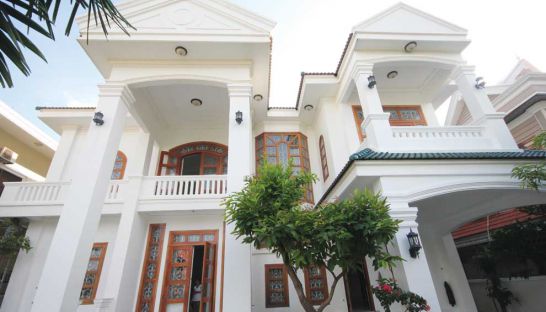The housing market for the ‘middle class’
The housing market for the ‘middle class’
Representatives from all sectors hail the up-and-coming middle class market segment. As much as the middle class is parroted as being the driving motor of economic growth, many definitions for the middle class exist. Meanwhile, the needs and ability to pay for housing for the middle class seem to remain unknown.

While the Cambodian government has no standard definition for the middle class, property developers, real estate agents and financial experts come up with different definitions. Some associate with people’s income, others would say it is about lifestyle.
As far as income is concerned, traditionally, there are two ways to slice the cake: in relative terms, equating the middle class with middle income range of a specific country; or in absolute terms, using a fixed income level which is equal for all countries.
According to US based Pew Research Center, its report released in July showed that among 14.6 millions of Cambodians in 2011, only 4.9 per cent of population fell into the group of middle income, which represented people living on $10.01 to $20 daily, compared with 13 per cent globally.
Given that the country’s percentage point change of middle class from 2001 to 2011 was only 2.7, there is still a long way ahead for those to rise out of the low income group, which accounts for 80 per cent of the country.
With a price range of $500 to $5,500 per square metre for residential property in Phnom Penh, according to a World Trust Estate report for the first quarter of 2015, the middle income that Pew Research Centre describes would be pretty much excluded from purchasing large parts of the capital.
Yet, the property and banking industry see ‘the middle class’—based by their incomes and also their needs for housing—as a different and lucrative market segment.
Century21, which defines a family with roughly $1,000 income per month, explained that homes that favor the middle class start at $40,000, primarily in borey developments in the suburbs of Phnom Penh.
“We have seen a huge surge in the real estate purchasing power of the middle class and focus on moderately priced land plots for sub-division, boreys and condominiums in the suburbs of Phnom Penh,” said Kevin Goos, CEO of Century21 Cambodia.
Meanwhile, the banking industry has also jumped on the middle class bandwagon describing growing appetite for real estate as well as consumer financing.
Grant Knuckey, CEO of ANZ Royal, said the 38 per cent growth in consumer credit last year is a strong sign of growing consumption and a growing middle class.
“Borrowing for discretionary consumption purposes on things like TVs, smartphones and cars is a reasonably clear indicator of growing middle class perceptions,” said Knuckey. “It is simply that the desire to ‘consume’ above the level of basic necessities implies that a person views themselves as moving into the middle class.”
The bank cannot afford to ignore the share from the middle class, therefore ANZ Royal bank has marketed unsecured personal loans early this year for its growing client base. Most people would use loans for home improvement, vehicles or appliances.
“Noticeably, they are also starting to borrow more, which reflects increased confidence in future earning potential,” said Knuckey, adding people are tending to spend rather than invest, mostly on consumer goods.
But, when it comes to investment, Knuckey said currently the major investment by local middle class is home ownership.
“The main reason is the lack of alternative credible investment options in Cambodia at present,” said Knuckey. “That will change as the capital markets grow.”
Saraboth Ea, managing director of MAXEM Property, said that local middle class customers tend to buy housing for their own use, while those who buy for investment already fall into the emerging affluent class.
Representing a good portion of business in terms of volume of transactions, MAXEM Property regards middle class families as those with household incomes of $800 to $2,500 per month.
With an investment budget of $40,000 to $90,000, Saraboth believes the current housing supply for the middle class is not enough.
“We’ve already seen lots of supply and development of projects where units range from $150,000 to $300,000, but these units are out of reach for the middle class and tend to be bought by the affluent and wealthy locals or by foreign buyers for investment purposes.”
Targeting a middle class with a household income between $600 and $1500 per month, Camhomes aims to provide home ownership, said Ryan Ong from HLH Group Limited, the developer of the project.
He explained that there is still a gap in affordable and high-quality housing supply for the local middle class. “As Cambodia continues to grow, we are seeing more and more middle class families becoming frustrated with a property market that focuses on the luxury market.”
Meanwhile, the luxury market that has taken hold could continue to push those that could be regarded as middle class, in relative terms, out of Phnom Penh’s market.
“Currently, the majority of city centre condominiums are being purchased by foreign buyers, which are inflating prices and are not sustainable over the long-term,” Ross Wheble, country manager of Knight Frank, told Post Property last month.
“It could be viewed that land prices (thus property prices) are rising too quickly compared to Cambodia’s GDP per capita, as local buyers are being priced out of the central Phnom Penh market due to salaries not increasing at the same rate as property prices,” he added.













